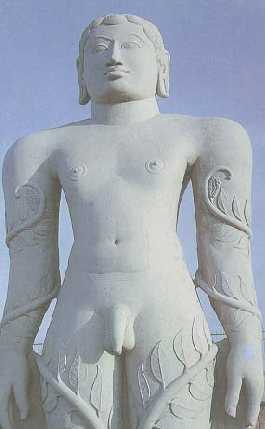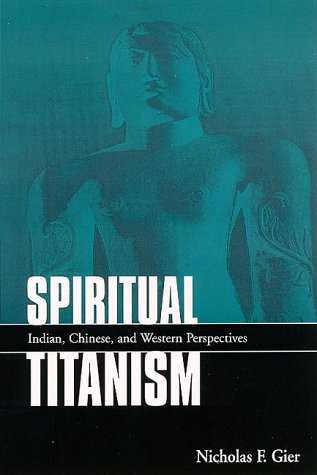 Jaina
Colossus at Shravanabelgola in Karnataka State
Jaina
Colossus at Shravanabelgola in Karnataka State State University of New York Press, 2000
State University of New York Press, 2000
SHORT SUMMARY OF BOOK
This book is an essay in comparative philosophy using the concept of Titanism to critique certain trends in both Eastern and Western philosophy. Titanism is an extreme form of humanism in which human beings take on divine attributes and prerogatives. The most explicit forms of spiritual Titanism are found in the Jaina, Sankhya, and Yoga traditions. In these views yogis claim powers and knowledge that in the West are only attributed to God. Answers to spiritual Titanism begin with the Hindu Goddess religion, but the most constructive responses are found in Zen Buddhism and Confucianism.
Prepublication Review: "The act of cross-cultural comparison, particularly in religious studies, is an art that once flourished but is now routinely challenged from a whole host of technical and specialist fronts. Gier’s text, essentially a comprehensive essay of normative comparative philosophy, is especially refreshing in such a world, as it effectively brings together an impressive range of scholarship (Western philosophy and theology, comparative mythology, Jaina, Hindu, Buddhist, Daoist, and Confucian studies) to create a truly comparative text with a distinct, original, philosophically and religiously important thesis. Gier’s category of "Titanism," which functions as an ethical critique of [some Indian schools] from the standpoint of a constructive postmodern . . . standpoint, enables him to accomplish this synthetic and normative feat, and to do it in a way that does not collapse the very real differences between these traditions into a simplistic perennialism or universalism. This is one of the few books that I have read that actually makes sense of what a ‘postmodern’ perspective is and how it might function. This is no mean accomplishment." –Jeffrey J. Kripal, author of the award winning Kali’s Child: The Mystical and the Erotic in the Life and Teachings of Ramakrishna (University of Chicago Press).
LONGER ABSTRACT OF BOOK
This book is an essay in comparative philosophy using the concept of Titanism to critique certain trends in both Eastern and Western philosophy. Titanism is an extreme form of humanism in which human beings take on divine attributes and prerogatives. The most explicit forms of spiritual Titanism are found in the Jaina, Sankhya, and Yoga traditions. In these views yogis claim powers and knowledge that in the West are only attributed to God. These philosophies are also radically dualistic and liberation involves a complete transcendence of the body, society, and nature.
The author identifies five types of spiritual Titanism: (1) Asura Titanism in which the asuras (demons, antigods, or Titans) constantly battle the Hindu gods; (2) Brahmin Titanism, in which the priests take over the divine power of the sacrifice; (3) Gnostic Titanism, in which humans contend that they have perfect knowledge; (4)Yoga Titanism, in which yogis claim to have divine powers by practicing austerities; and (5) Bhakti Titanism, in which humans such as Krishna are bestowed with powers of universal redemption. In addition to this typology, the author offers a heuristic based on Nietzsche's Three Metamorphoses of camel (=premodern), lion-Titan (=modern), and child-Overman (=postmodern). The book proposes that Zen monks and Chinese sages represent the child stage, which constitutes a constructive postmodern solution to the problems of Indian Titanism.
Reaction to Indian spiritual atomism came in the form of Hindu Goddess worship and the Tantric traditions. Both of these practices brought humans back to their bodies and nature. Other constructive responses to Titanism are found in Buddhism (especially Zen), Confucianism, and Daoism. The author finds that both Buddhism and Confucianism anticipate a constructive postmodern response to modernist notions of self and world found in the Jaina-Sankhya-Yoga philosophies. This is seen most explicitly in their rejection of substances of any kind, a commitment to a social and relational view of the self, and a revalorization of nature. The Confucian sage, always expansive and integrative, is contrasted with the opposite tendencies in some Indian saints.
 Jaina
Colossus at Shravanabelgola in Karnataka State
Jaina
Colossus at Shravanabelgola in Karnataka State
--Heinrich Zimmer, Philosophies of India